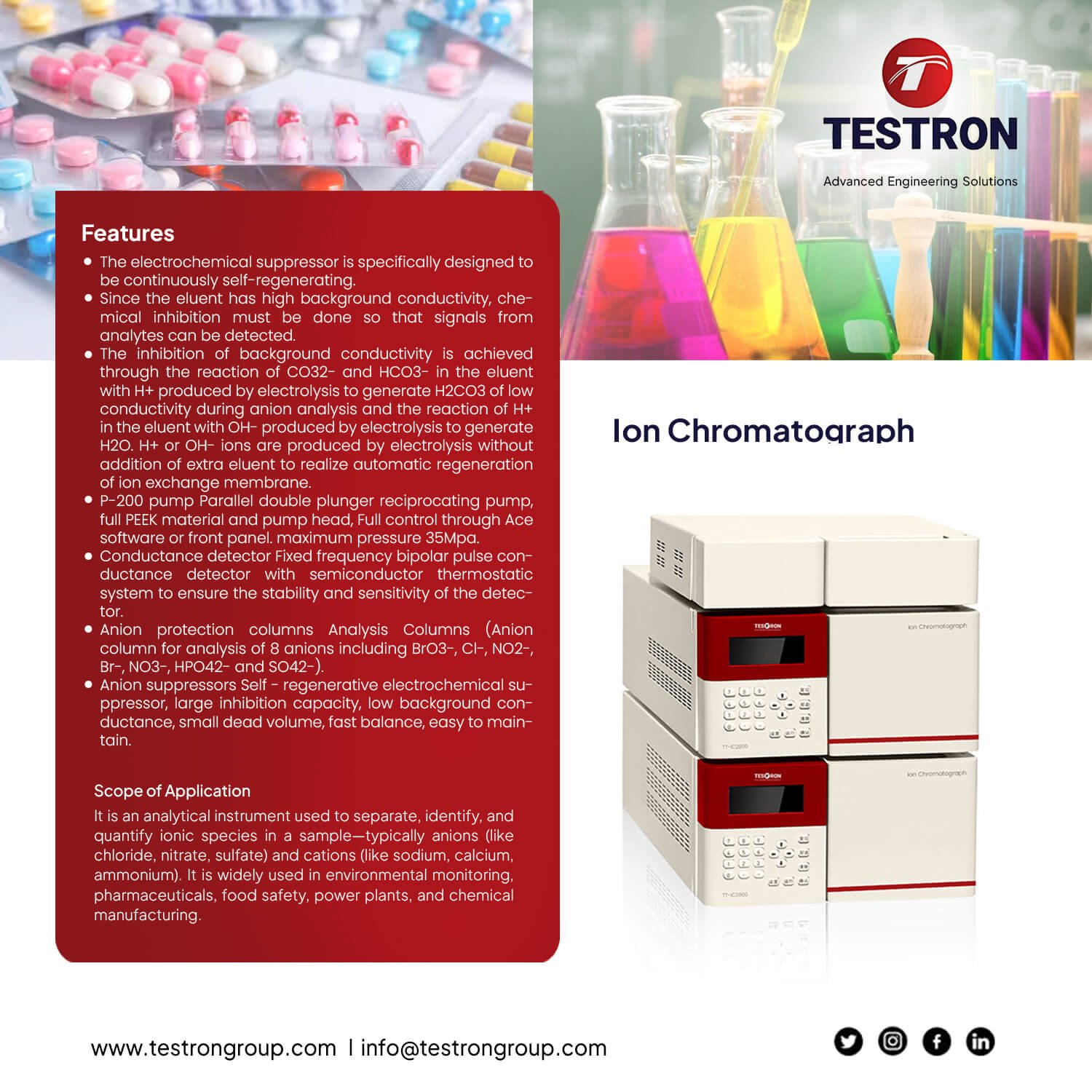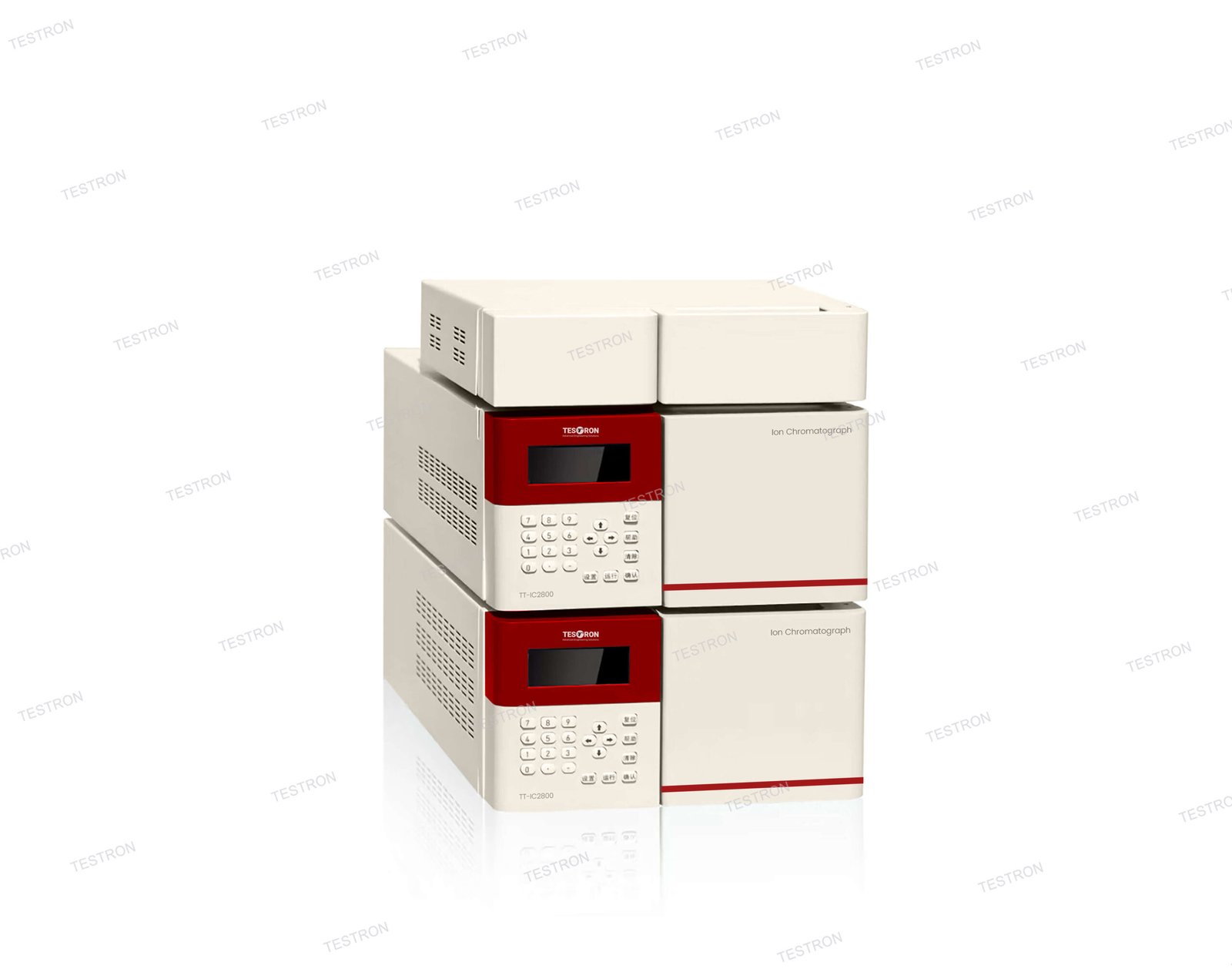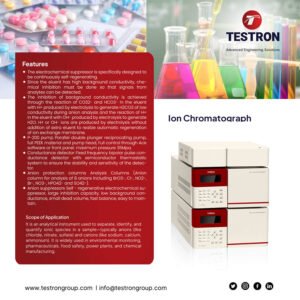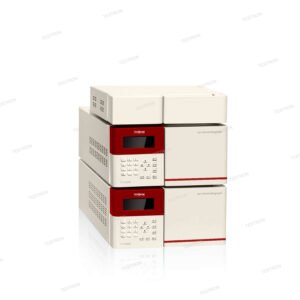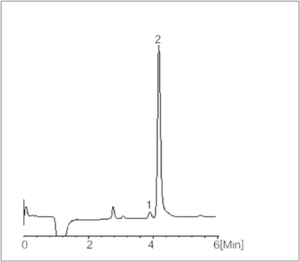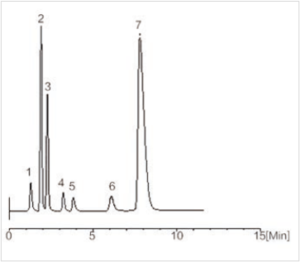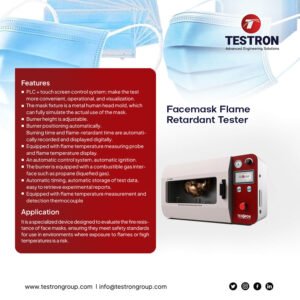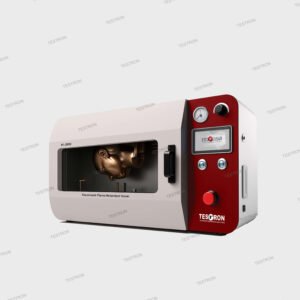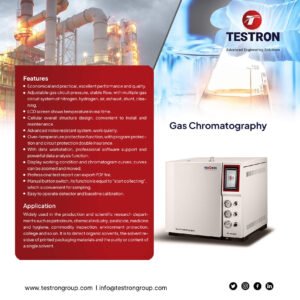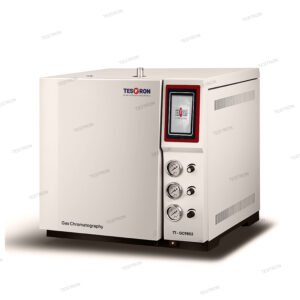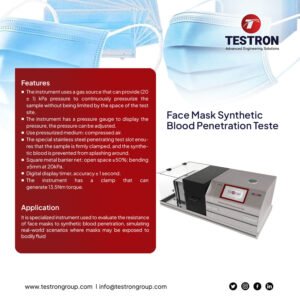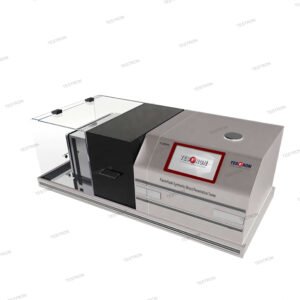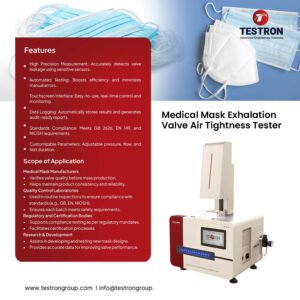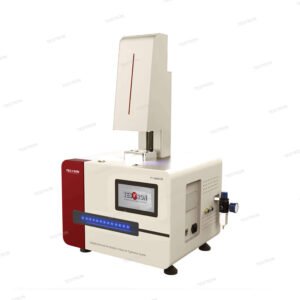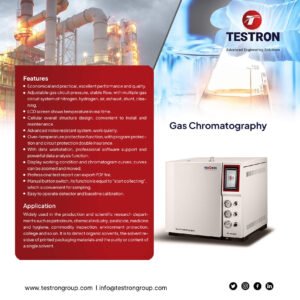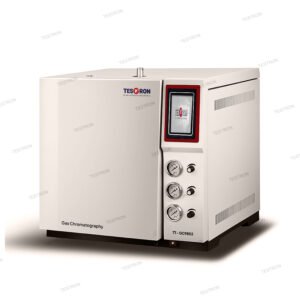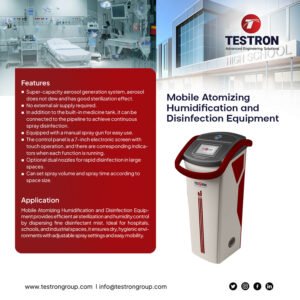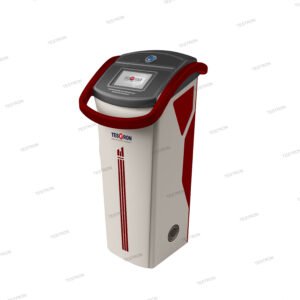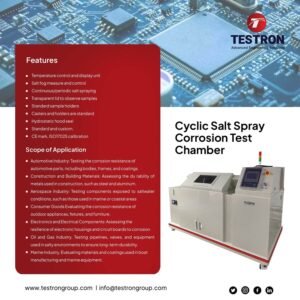Test Standard of TT-IC2800 Ion Chromatograph
ASTM, EPA, SMEWW
Application of TT-IC2800 Ion Chromatograph
It is an analytical instrument used to separate, identify, and quantify ionic species in a sample—typically anions (like chloride, nitrate, sulfate) and cations (like sodium, calcium, ammonium). It is widely used in environmental monitoring, pharmaceuticals, food safety, power plants, and chemical manufacturing.
Features of TT-IC2800 Ion Chromatograph
- The electrochemical suppressor is specifically designed to be continuously self-regenerating.
- Since the eluent has high background conductivity, chemical inhibition must be done so that signals from analytes can be detected.
- The inhibition of background conductivity is achieved through the reaction of CO32- and HCO3- in the eluent with H+ produced by electrolysis to generate H2CO3 of low conductivity during anion analysis and the reaction of H+ in the eluent with OH- produced by electrolysis to generate H2O. H+ or OH- ions are produced by electrolysis without addition of extra eluent to realize automatic regeneration of ion exchange membrane.
- P-200 pump Parallel double plunger reciprocating pump, full PEEK material and pump head, Full control through Ace software or front panel. maximum pressure 35Mpa.
- Conductance detector Fixed frequency bipolar pulse conductance detector with semiconductor thermostatic system to ensure the stability and sensitivity of the detector.
- Anion protection columns Analysis Columns (Anion column for analysis of 8 anions including BrO3-, Cl-, NO2-, Br-, NO3-, HPO42- and SO42-).
- Anion suppressors Self – regenerative electrochemical suppressor, large inhibition capacity, low background conductance, small dead volume, fast balance, easy to maintain.
Technical Specifications of TT-IC2800 Ion Chromatograph
| Model | TT-IC2800 |
| Analysis | |
| Detectable Ions | Anions: F-, Cl-, N -, Br-, Br -, N -, HP -, S -, -, S -, HCOO-, acetic acid, oxalic acid, outgrowth of sterilized tap-water |
| Cations: Li+, Na+, NH4 +, K+, Mg2+, Ca2+ | |
| Detection Range | ppb~ppm |
| Dynamic Range | 10³ |
| Linear Related Coefficient | 0.9998(for CI- and Li+) |
| Baseline Noise | ≤ 0.5%FS |
| Baseline Drifting | ±1.5%FS /30 min |
| Fluid Pump | |
| Type | Parallel dual piston pump, pulse and motion controlled by microprocessor; speed adjustable. |
| Construction | Chemically inert, Non-metallic PEEK materials for the pump head and flow system |
| pH | 0-14 |
| Control | By Ace software or front panel |
| Operating Pressure | Max 35 MPa (5000 psi) |
| Flow Rate Range | 0.001-15.0 mL/min,0.001 increments |
| Flow Precision | ≤ 0.1% RSD |
| Flow Accuracy | ±0.2% |
| Piston Valve Cleaning | Double piston continuous cleaning |
| Over Pressure Protection | Upper limit 0-35 MPa, with 1-unit incremental, lower limit: 1 unit lower than upper limit. Pump stops working if upper limit is reached |
| Online degassing (optional) | 2-channels, automatic online |
| Temperature Controlled Conductivity Detector | |
| Type | Microprocessor controlled, digital signal |
| Cell Frequency | 10 kHz |
| Range of detection | 0-15000 μS |
| Resolution | 0.0275 nS/cm |
| Cell Temperature Range | Room temperature ~ 60℃, User adjustable |
| Temperature Stability | ≤ 0.005 ℃ |
| Cell Construction | PEEK |
| Cell Volume | < 1 μL |
| Column Oven | |
| Temperature Range | Room temperature +5 ℃ – 60 ℃ |
| Temperature Accuracy | ±0.5 ℃ |
| Temperature Stability | ≤ 0.1 ℃ |
| Suppressor | |
| Suppression Type | Automated self-regeneration recirculation |
| Suppression Capacity | Anion 100 mmol /L NaOH |
| Cation 100 mmol /L MSA | |
| Dead Volume | < 50 μL |
| Equilibrium time | < 15 min |
| Anion Suppressor Current | 0-200 mA,in 1 mA increments |
| Cation Suppressor Current | 0-300 mA,in 1 mA increments |
| Eluent Generator | |
| Eluent Concentration range | 0.1 – 50 mmol/L |
| Eluent Type | OH-、 -/ -、MSA |
| Concentration Increment | 0.1 mmol/L |
| Flow Rate Range | 0.5 – 3.0 mL/min |
| Operating Temperature | Room temperature -40 ℃ |
| Operating Humidity | 5%-85% relative humidity, no-condensation |
| Dimensions(L× W × H) | 586 mm× 300mm× 171mm |
| Weight | 5 kg |
| Autosampler | |
| Sample Positions | 120 samples (1.8mL vials) |
| Repeatability | < 0.3%RSD |
| Residue/Cross Contamination | CV < 0.01% |
| Sample Volume | 0.1 – 100 μL |
| Injection Probe Cleaning | Repetitive cleaning, no time limit |
| Dimensions(L × W × H) | 505 mm × 300 mm × 230 mm |
| Power | 220V±10 V,50/60 Hz |
| Other Specifications | |
| Power | 220 V±10 V,50/60 Hz |
| Environment Temperature | 5℃ – 40 ℃ |
| Environment Humidity | 5% – 85% relative humidity, no-condensation |
| Communication Interface | RS485(USB Optional) |
| Dimensions (L × W ×H) | 586 mm × 300 mm × 350 mm |
| Weight | 34 kg |
| Power | 150 W |
Application Chromatograms of TT-IC2800 Ion Chromatograph
|
Analysis of Acetic Acid and Hydrochloric Acid in Electrolyte 1. Acetic acid
| 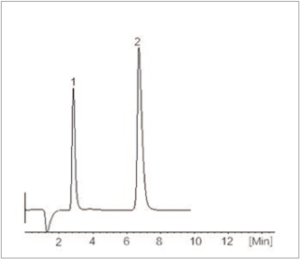 Separation of Bromate and Chloride 1. Bromate 10ppb
|
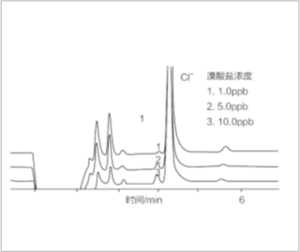 Analysis of Bromate 1. 1.0 ppb 2. 5.0 ppb
| 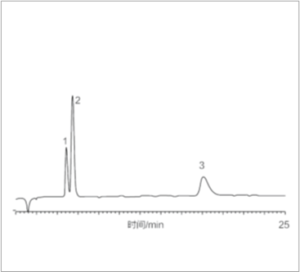 Analysis of Sulfur Specification 1. SO_(3^2 )- 10 ppm
|
|
Separation of Inorganic Anions 1. F- 1 ppm
| 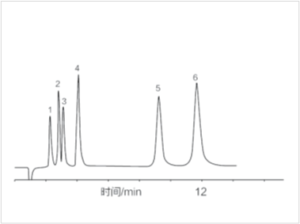
Analysis of Cations 1. Li+ 0.5 ppm
|
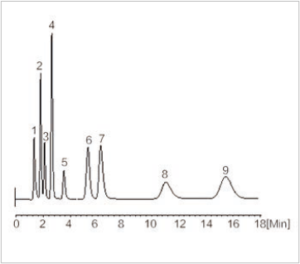
Simultaneous Separation of 9 Anions 1. F- 0.5 ppm
| 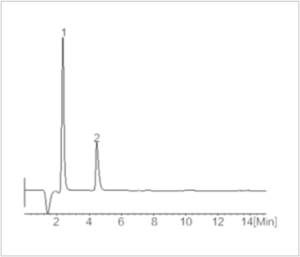
Detection of Halogen Ions in Electronic Products by Oxygen Combustion –IC Method
|

